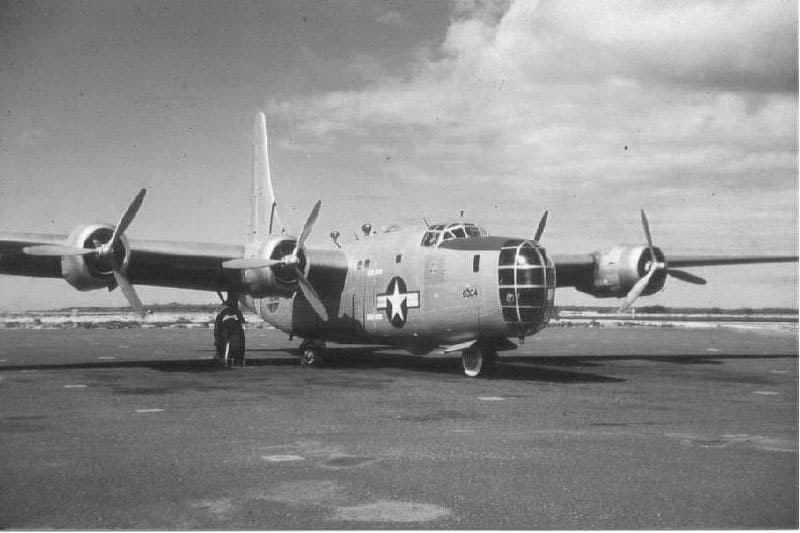
Marsten Matting, a series of portable prefabricated interlocking pierced steel planks, had been developed, enabling rapid construction of runways in forward combat areas capable of supporting heavy gross weight aircraft operations. In order to take advantage of this capability the US Navy wanted a force of land based B-24 Liberators to fly long range overwater maritime patrol missions against enemy shipping and submarines. A share of the B-24 production, slightly modified, and designated PB4Y-1 was agreed to in July 1942. Five of these aircraft were eventually used by the US Coast Guard.
The development of a B-24 variant, more suitable for Navy operations began in May 1943. Wind tunnel testing by Consolidated Aircraft Corporation had demonstrated that the B-24 would be more stable if the twin fins and rudders were replaced by a single large tail fin and rudder. Since most Navy missions were flown at low altitudes the engines were changed to non-supercharged R-1830 -94 engines. The oil cooler scoops were repositioned above and below the nacelle and a single tall vertical tail was installed. In addition the fuselage was extended to accommodate a flight engineers station. Defensive armament was also increased. This variant was given the name of Privateer and designated PB4Y-2.
The Privateers were built by Convair-San Diego. The PB4Y-2 was used exclusively in the Pacific theatre in World War II where it was used primarily for patrol missions in support of amphibious operations. After the war numerous PB4Y-2s were converted for various other missions. The Privateers were again used in the Korean War with the last one leaving Fleet service in mid-1954.
Beginning in 1945, with the expansion the Coast Guard took delivery of the first of six PB4Y-2 Privateers were obtained from the Navy for Loran supply and search and rescue. Their long range capability and reliability made them a welcome addition for cargo hauling and maritime search and rescue missions. These were replaced by Seven P4Y-2Gs, modified PB4Y2s, which were modified with large observation blisters and increased nose visibility. The aircraft operated out of Coast Guard air stations at Barbers Point, Hawaii and San Francisco, California. They were also used by the Coast Guard air rescue detachments at Guam, Wake and Midway Islands during the Korean War
By 1958 only four remained in service and in 1960 they were returned to the US Navy for disposal. A number of the Coast Guard P4Y-2Gs were later utilized by private corporations as aerial fire bombers.
| Manufacturer | Convair | Max Speed | 237 mph |
| Designation | P4Y-2G | Cruise Speed | 140 mph |
| Other | Privateer | Stall Speed | 95 mph |
| Aircraft Type | Patrol – Search and Rescue | Range | 2800 st. miles |
| Wing Span | 110’ | Empty Weight | 37,485 lbs |
| Height | 30’ 1” | Gross Weight | 65,000 lbs |
| Length | 74’ 7” | Service Ceiling | 20.700 ft |
| Crew | 11 | Engines | Four P&W 1830-94S |

